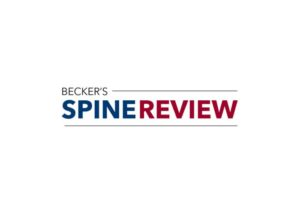 Orthopedic surgeon Benedict Nwachukwu, MD, joined New York City-based Hospital for Special Surgery in September.
Orthopedic surgeon Benedict Nwachukwu, MD, joined New York City-based Hospital for Special Surgery in September.
He is co-director of clinical research for the sports medicine institute at HSS and a Assistant Professor of Orthopedic Surgery at Weill Cornell Medical College, also in New York City.
Here, Dr. Nwachukwu discusses what he is looking forward to in his new role at HSS and emerging trends in the field of sports medicine.
Question: What are you most looking forward to about practicing at Hospital for Special Surgery?
Dr. Benedict Nwachukwu: I am most looking forward to practicing in a place with an unbelievable culture of excellence in orthopedic care delivery. Every single hospital personnel that interacts with a HSS patient is keyed in on delivering the best possible outcome and patient care experience. I believe that this detailed attention to every patient sets HSS apart. I am excited to be a surgeon in such a wonderful environment where I know that everyone is on the same team with the goal of getting the patient back in the game. I truly believe that practicing in the HSS culture of excellence will allow me to provide the best possible care to my patients.
Q: How can sports medicine physicians contribute to the development of the field with their research today?
BN: Sports medicine and the management of soft tissue musculoskeletal injuries is among the fastest growing areas of orthopedic surgery and medicine. As such, it is important for sports medicine physicians to stay continually up-to-date with evolving techniques and their application to patient care. There is a responsibility to track patient outcomes with evolving techniques and to report in the scientific literature things that work well or that may have limited benefit. For example, over the years, my collaborators and I have analyzed registry data and we defined for various procedures the patients and/or disease conditions that are most likely to have meaningful outcome improvement with surgery.
Q: How do you see platelet-rich plasma and stem cell therapy developing in the field?
BN: Our understanding of the use of platelet-rich plasma and stem cell therapy is continually evolving. The application of biologics for certain orthopedic conditions is now increasingly supported by clinical studies. In particular, tendon conditions and early joint degeneration have shown promise for these treatments. However, different compositions of platelet-rich plasma and delivery modalities for stem cell agents are also being shown to influence the effectiveness of biologic products. Currently there is no gold standard. As platelet-rich plasma and various stem cell options become increasingly common in orthopedics, there will be a need to standardize the composition and delivery of these products.
Q: What trend are you most excited to see developing in sports medicine in the next five years?
BN: I am most excited about the evolution of hip preservation and hip arthroscopy within sports medicine. Hip arthroscopy is a relatively new procedure within orthopedics and within the past decade, surgical techniques for addressing femoroacetabular impingement have evolved significantly. We are at an exciting time in the field of hip preservation because we have the potential to address hip problems that previously needed open surgery. I specialize in hip arthroscopy and I am excited to help evolve techniques for labral repair, reconstruction, femoral head avascular necrosis and cartilage/subchondral disease.




